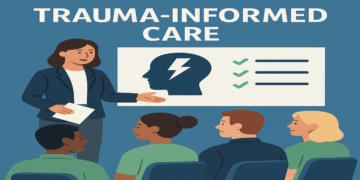Introduction to Psychosocial Safety
Psychosocial safety in the workplace is a crucial aspect of creating a positive and healthy work environment. It goes beyond physical safety and encompasses the psychological and emotional well-being of employees. When employees feel comfortable, supported, and respected, they are more likely to be engaged, productive, and satisfied with their work.
A lack of psychosocial safety can have significant negative consequences for both individuals and organizations. Employees who feel unsafe or unsupported may experience increased stress, anxiety, burnout, and decreased job satisfaction. This can lead to reduced productivity, absenteeism, and even turnover. Additionally, a toxic work environment can damage an organization’s reputation and make it difficult to attract and retain top talent.
Therefore, it is essential for organizations to prioritize psychosocial safety. By creating a supportive and inclusive work environment, organizations can improve employee morale, boost productivity, and foster a positive company culture.
Understanding Psychosocial Hazards
Psychosocial hazards are basically the bad vibes at work. They’re things that stress you out, make you feel anxious, or just plain unhappy. Think too much work, long hours, a bad boss, or feeling bullied. These hazards can arise from various sources, including:
- Work organization: Excessive workload, long working hours, job insecurity, and poor work-life balance.
- Relationships: Workplace bullying, harassment, discrimination, and lack of social support.
- Role ambiguity and conflict: Unclear job expectations, conflicting demands, and lack of autonomy.
- Physical environment: Poor lighting, noise, temperature extremes, and overcrowding.
- Technology: Excessive use of technology, leading to burnout, eye strain, and sleep disturbances.
- Change: Rapid changes in the workplace, such as restructuring or new technology, can cause stress and anxiety.
The Role of Managers in Psychosocial Safety
Managers play a crucial role in creating a psychologically safe workplace. They are responsible for:
- Identifying and assessing risks: Regularly assessing the workplace for potential psychosocial hazards and identifying employees who may be at risk.
- Implementing preventive measures: Developing and implementing policies and procedures to address psychosocial hazards, such as providing adequate training, promoting work-life balance, and fostering a positive work culture.
- Responding to reports: Promptly investigating and addressing reports of psychosocial hazards, ensuring confidentiality and providing support to affected employees.
- Communicating effectively: Openly communicating with employees about mental health and psychosocial hazards, emphasizing the importance of seeking help and providing information on available resources.
- Building a positive culture: Creating a supportive and inclusive work environment where employees feel valued, respected, and empowered.
- Leading by example: Demonstrating healthy behaviors and modeling positive coping mechanisms.
- Providing mentorship and support: Offering guidance and support to employees, especially during times of stress or change.
- Encouraging open communication: Creating a safe space for employees to express their concerns and ideas without fear of judgment or retaliation.
Legal Requirements of Psychosocial Safety at Work
While specific legal requirements may vary by jurisdiction, many countries have laws and regulations governing workplace health and safety. These laws often include provisions related to psychosocial hazards. It is essential for employers to comply with these legal obligations to protect their employees and avoid legal liabilities.
In Australia, employers have a legal obligation to provide a safe and healthy work environment for their employees, including psychosocial safety. Under the Work Health and Safety Act 2011 (WHS Act), employers must take reasonable care to ensure the health and safety of their employees, including their mental health. This means that employers must identify and assess psychosocial hazards in the workplace, implement measures to control these hazards, and provide training and support to employees. Failure to comply with these legal requirements can result in serious consequences, including fines and legal action.
Identifying and Assessing Risks of Psychosocial Hazards
To effectively manage psychosocial hazards, it is necessary to identify and assess their potential risks. This can be done through:
- Risk assessments: Conducting regular risk assessments to identify potential psychosocial hazards and evaluate their impact on employees.
- Employee surveys and feedback: Gathering employee feedback through surveys, focus groups, or one-on-one interviews to understand their experiences and concerns.
- Observation: Observing employee behavior and interactions to identify signs of stress, burnout, or other psychosocial issues.
- Data analysis: Analyzing workplace data, such as absenteeism rates, turnover, and productivity, to identify potential psychosocial hazards.
- Consultation with experts: Consulting with mental health professionals or workplace safety experts to provide guidance and support.
Strategies for Preventing and Addressing Psychosocial Hazards
Several strategies can be implemented to prevent and address psychosocial hazards in the workplace, including:
- Work-life balance initiatives: Promoting work-life balance through flexible work arrangements, time management training, and encouraging employees to take breaks.
- Stress management programs: Providing employees with stress management techniques, such as mindfulness, meditation, or relaxation exercises.
- Employee assistance programs (EAPs): Offering confidential counseling and support services to employees facing personal or work-related challenges.
- Training and development: Providing training on topics such as workplace communication, conflict resolution, and mental health awareness.
- Positive work culture: Fostering a positive work culture that values respect, inclusivity, and employee well-being.
- Workplace ergonomics: Ensuring that the physical work environment is designed to minimize discomfort and strain.
- Technology management: Implementing policies and guidelines for the use of technology to prevent excessive screen time and promote healthy work habits.
- Change management: Providing support and resources to employees during times of organizational change.
- Online Course: An online course on Psychosocial Safety at Work can provide managers with valuable knowledge and skills to create a healthier and more supportive work environment.
Responding to Reports of Psychosocial Hazards
When an employee reports a psychosocial hazard, it is essential to respond promptly and effectively. This involves:
- Confidentiality: Ensuring confidentiality and privacy for the employee reporting the hazard.
- Investigation: Conducting a thorough investigation to gather information and understand the circumstances.
- Support: Providing support to the affected employee, including access to counseling or other resources.
- Corrective action: Taking appropriate corrective action to address the underlying issue and prevent future occurrences.
- Documentation: Documenting the incident and any actions taken to address it.
- Follow-up: Following up with the employee to ensure that the issue has been resolved and that they are receiving the necessary support.
Effective Communication to Raise Mental Health Awareness
Effective communication is key to addressing psychosocial hazards. Managers should:
- Openly communicate: Communicate openly with employees about mental health and psychosocial hazards, emphasizing the importance of seeking help and providing information on available resources.
- Encourage reporting: Create a safe and supportive environment where employees feel comfortable reporting concerns without fear of retaliation.
- Promote awareness: Raise awareness about psychosocial hazards and their impact on employee well-being through training, workshops, and campaigns.
- Use clear and concise language: Communicate information in a way that is easy to understand and avoid jargon or technical terms.
- Listen actively: Pay attention to employees’ concerns and respond empathetically.
Building a Culture of Psychological Safety
Creating a culture of psychological safety is essential for fostering a mentally healthy workplace. This involves:
- Leadership commitment: Demonstrating strong leadership commitment to employee well-being and creating a supportive environment.
- Employee involvement: Encouraging employee participation in decision-making and problem-solving processes.
- Recognition and rewards: Recognizing and rewarding employees for their contributions and achievements.
- Continuous improvement: Regularly evaluating and improving psychosocial safety practices to ensure ongoing effectiveness.
- Promoting diversity and inclusion: Creating a workplace where everyone feels valued and respected, regardless of their background or identity.
- Encouraging work-life balance: Supporting employees in maintaining a healthy balance between their work and personal lives.
- Enroll to Online Course: Online courses on Psychosocial Safety at Work can help create a more positive and inclusive workplace culture by equipping both managers and employees with the knowledge and skills needed to promote employee well-being and prevent psychosocial hazards.
Psychosocial safety is a critical aspect of workplace health and well-being. By implementing effective strategies and fostering a supportive work environment, organizations can significantly reduce the impact of psychosocial hazards on their employees. By prioritizing the mental health of their workforce, organizations can create a more productive, engaged, and resilient workplace.









